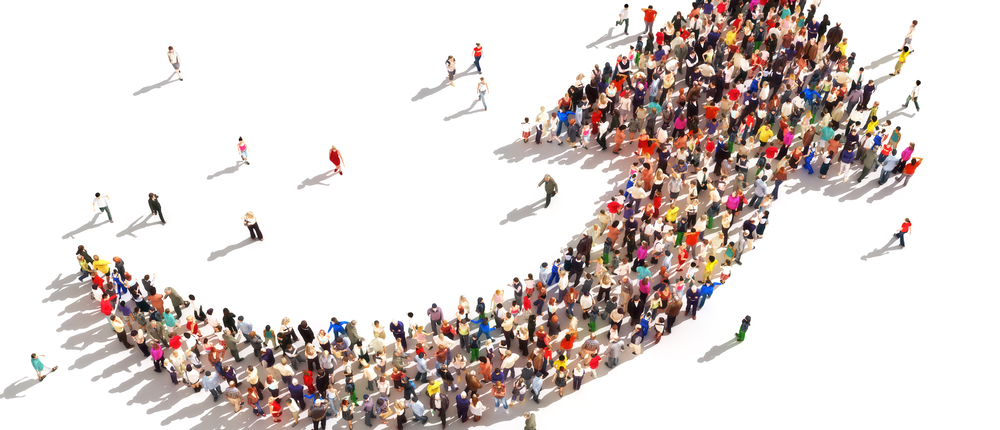The ability to respond, change, adapt, and adopt new behaviours, ways of working, relationships and lifestyles is fundamental to your organization’s survival. It is also critical to its success.
Creating an organization that can use change to power growth and performance with healthy and engaged employees is a game-changer.
You can’t do this when you’re bombarding employees with one change initiative after another. Even worse, at the same time. When you launch a constant stream of change initiatives without allowing people to restabilize, you end up enabling the status quo.
Creating an organization that can use change to power healthy growth, performance, and sustainability requires a fundamental shift in the way you think about and approach change in your organization.
Shift your Thinking with a Readiness Mindset™
Pretty much every client I talk to tells me they need help because their employees are resistant to change. I remember one organization that was struggling to get a new system adopted. The leaders believed the employees were resistant to change. It only took a few conversations to realize the employees weren’t resistant. They were exhausted.
Change initiatives were being launched almost weekly. The employees had learned if they just kept their heads down and didn’t engage eventually the initiatives would stall out and go away.
Clients tell me resistance to change is the most significant barrier they face. This perception negatively shapes the way they think about organizational change. One of the first things I do when I work with leaders is help them to shift to a readiness mindset. A readiness mindset sets the leaders and their team up to enable healthy and sustainable change.
Readiness, not a lack of resistance, determines if your team will adopt that new activity, technology, or any other change you need to make in your organization.
 Readiness is the most potent predictor of success for any change. Years ago, I worked on implementing an electronic health record. Working with the nurses to assess their readiness, I found that readiness negated the effects of age, education, and experience. Readiness is not just the absence of resistance. It is our willingness, capability, and commitment to move toward something new or different.
Readiness is the most potent predictor of success for any change. Years ago, I worked on implementing an electronic health record. Working with the nurses to assess their readiness, I found that readiness negated the effects of age, education, and experience. Readiness is not just the absence of resistance. It is our willingness, capability, and commitment to move toward something new or different.
That’s why for over ten years, I have a helped leaders shift from a resistance mindset – the belief that people resist change—and adopt a readiness mindset. A readiness mindset is based on the belief that when people feel prepared and supported, they will move toward change—leaders who have a readiness mindset focus on building their employees, teams, and the organization’s change capability.
A readiness mindset sets you up for success because it breaks the cycle of resistance to change. You work with people to move toward something new or different, and you work proactively rather than reactive. The proactive and readiness-based approach gives you a broader and more diverse way of describing and interacting with what’s happening. You can respond to the normal human responses to change without creating a defensive reaction and prepare people for change.
Mindset is the starting place for using change to power growth.
But it’s not enough.
To enable constant but healthy and sustainable change, you also need to approach individual change initiatives differently.
Use a Holistic Systems Approach
Think about the changes in your organization. Did specific change initiatives come to mind?
That’s not surprising.
Many organizational changes are initiatives and require dedicated time, people, and resources to enable adoption.
Problems start to come up when change initiatives are managed in isolation. To fix this, you need to shift your approach. You need an approach that recognizes every organizational change as one piece in a series of transitions instead of each initiative being an isolated event.
Your organization is a multi-dimensional system. To ensure the whole is greater than the sum of its parts, you need a holistic systems approach to change. Shifting to a holistic systems approach to change helps you see and address hidden interconnections within your organization. Your organizations’ interconnections and relationships directly impact your employees’ ability to respond to change.
Every organizational change, regardless of its size, will send a ripple through your organization. I recall talking to one leader about the ripple effect that can happen when even the slightest thing is different. He said, “ripple? More like a Tsunami.” The extent to which any ripple or wave will affect your organization depends on your ability to recognize and assess the impact of the new event within the organization’s context.
When an organizational change is approached and led as a single event or project, you are more likely to overlook all but the most immediate or largest waves.
I remember one client telling me how their organization had successfully made a series of small departmental changes to reduce inefficiencies.
The changes from the initiating department cascaded to several other departments. The lack of preparedness of the employees in those departments resulted in them having to scramble and create workarounds to accommodate the newly implemented changes.
Instead of reducing inefficiencies, those small departmental changes created more. The net effect for the organization was a loss in organizational change capability.
It is possible and necessary to organize and enable constant change without creating burned-out, change-fatigued employees. With a shift to a readiness mindset and the adoption of a holistic systems approach, you can create change-ready organizations.
Ready to get started? Transform your organization.



